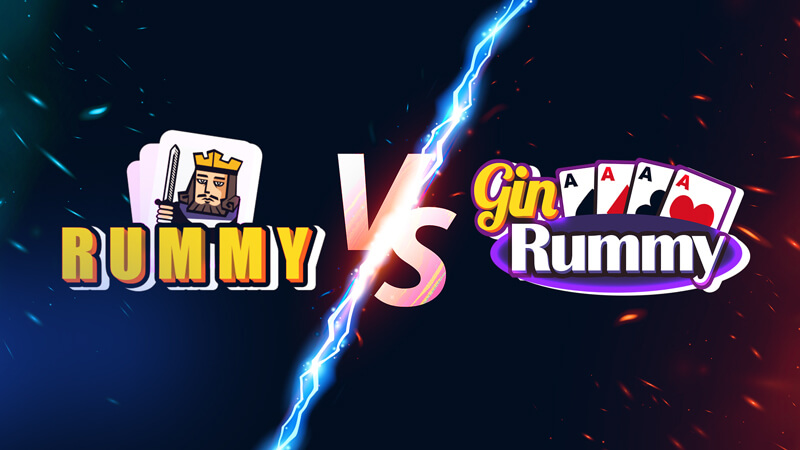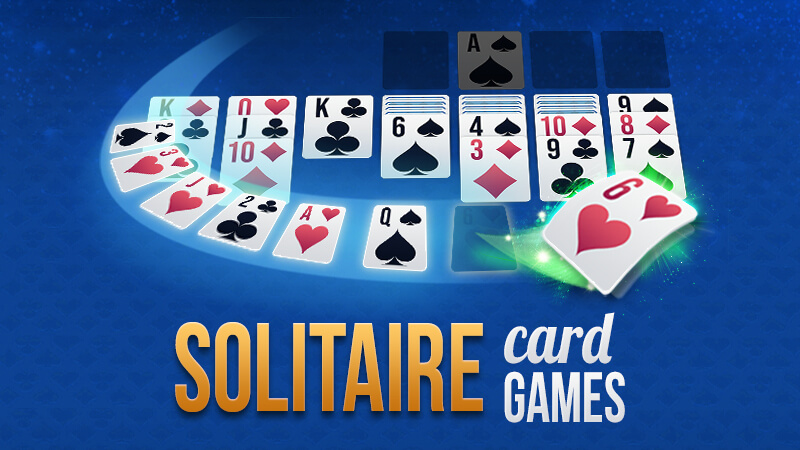Rummy vs. Gin Rummy

Table of contents
Both Rummy and Gin Rummy involve forming sets and runs with the cards in your hand, but Gin Rummy places a greater emphasis on achieving a “gin” hand and has specific rules about when you can lay down your melds. Rummy, on the other hand, allows more flexibility in melding and may involves more players.
In this article, we’ll dive into the world of Rummy and Gin Rummy, exploring their rules, gameplay, melding, and going out processes while highlighting their similarities and differences.
1. Card deck
2. Objective
- Sets: Sets consist of three or four cards of the same rank but different suits. For example, having the 4 of spades, 4 of hearts, and 4 of diamonds forms a valid set.
- Runs: Runs are sequences of three or more consecutive cards within the same suit. For instance, a run could be formed with the 6, 7, and 8 of clubs.
3. Dealing and Gameplay
The dealer begins by thoroughly shuffling the deck, ensuring a random distribution of cards. Subsequently, the dealer proceeds to distribute 10 cards to each player alternately, one card at a time for each player. The remaining cards are positioned face down at the center of the table, constituting what is known as the stockpile. A single card from the top of the stockpile is revealed, placed face-up, and thus initiates the formation of the discard pile.
If the dealer doesn’t have a complete deck of cards or doesn’t distribute the correct number of cards to each player, it can result in a misdeal.
A typical player’s turn involves two main actions: drawing and discarding.
Drawing: At the beginning of their turn, the player must pick a card from the stockpile (the face-down pile in the center) or the discard pile (the face-up pile next to the stockpile). The drawn card is added to their hand.
Discarding: After drawing a card, the player must choose one card from their hand to discard onto the discard pile. This discarded card can be strategically chosen to minimize penalty points or further their plans to form sets and runs.
4. Melding and Going Out
Melding in Rummy
Melding is the process of placing the valid card combinations face-up on the table. Players can add cards to their own melds or add cards to their opponents’ melds during their turns, which can be a strategic move to get rid of unwanted cards or disrupt their opponents’ plans.
Melding is a significant aspect of Rummy as it determines when a player can end the round or game by going out. When a player has successfully melded all their cards into valid sets and runs and has no remaining cards in their hand, they can declare “Rummy” or “Go out” and end the round, scoring penalty points for any unmatched cards in opponents’ hands.
Melding in Gin Rummy
The goal in Gin Rummy is not just to have valid melds but to achieve a “gin” hand, which is a hand where all cards are in sets or runs with no unmatched (deadwood) cards.
Melding is crucial in Gin Rummy because players can only “knock” (end the round) when they believe their hand is fully melded, with no unmatched cards. If they are correct and their hand indeed meets the gin criteria, they win the round. If not, they receive penalty points for any deadwood cards in their hand.
5. Scoring
Scoring in Rummy
When a player successfully goes out in the game, the remaining players engage in a scoring process by calculating the value of the cards they still hold. Here’s how this scoring is conducted:
- Face cards (King, Queen, and Jack) carry a point value of 10 each.
- Aces are valued at 1 point each.
- Number cards are assessed at their displayed value
The cumulative total of all these card values in the hands of the other players is then added to the winning player’s overall score. The game typically continues with further deals until one of the players achieves the predetermined points target set at the beginning of the game or until the agreed-upon number of deals has been completed.
Scoring in Gin Rummy
Scoring in Gin Rummy revolves around the point values assigned to the deadwood cards. The values of the cards are the same as in standard Rummy.
When it comes to round scoring:
- Knocking Player’s Score: Once a player decides to knock, and the necessary layoffs are made, the knocking player receives a score that equals the difference between the two players’ hands. For instance, if a player knocks with a hand worth 7 points, and the defending player has 12 deadwood points left in their hand after laying off cards, the knocking player would receive 5 points for that particular hand.
- Gin Bonus: If a player goes out by forming valid melds and has no unmatched cards in their hand (a “gin” hand), they typically receive a bonus of 25 points, in addition to the sum of the deadwood points left in the opponent’s hand.
Stay in the loop with all things Euchre!
Level up your game with our newsletter
Subscribe to our newsletter for the latest exclusive offers, tournament updates, game strategies, and tips. Join our Euchre community today and never miss a card-playing beat.
Sign up now and let the cards do the talking!
Copyright 2025 All rights reserved
This product is intended for people over 18 years of age for entertainment purposes. This game includes in-app purchases. Practice or success in social casino gambling does not imply future winnings in real money gambling and gambling in general.
Copyright 2025 All rights reserved
This product is intended for people over 18 years of age for entertainment purposes. This game includes in-app purchases. Practice or success in social casino gambling does not imply future winnings in real money gambling and gambling in general.





